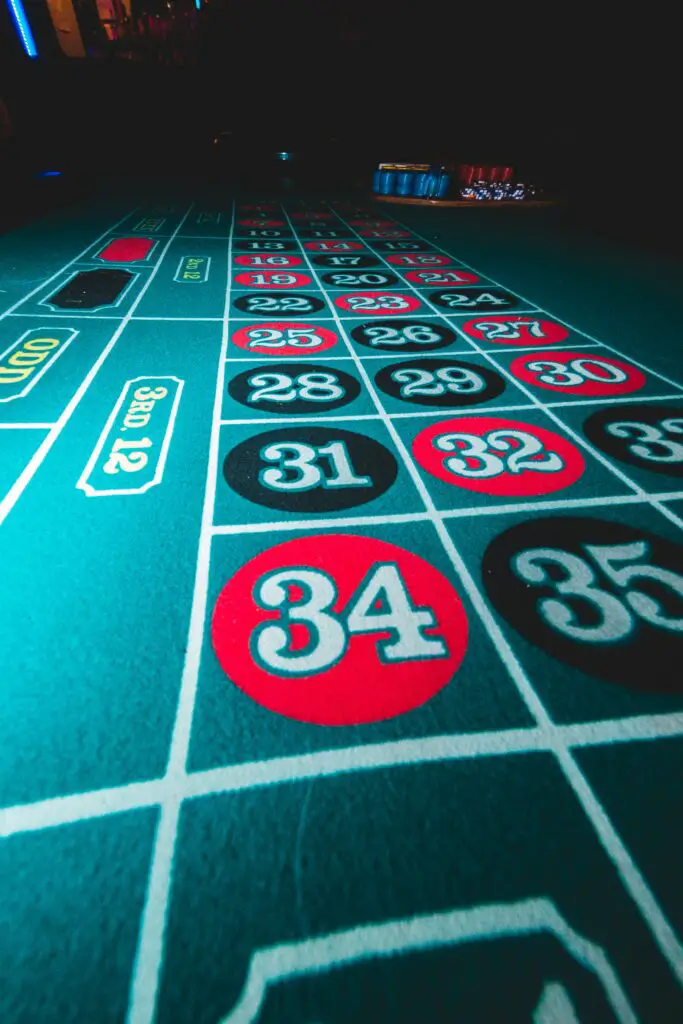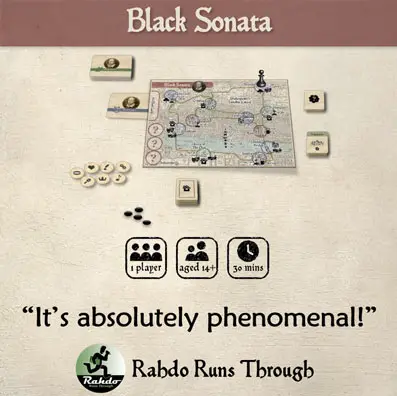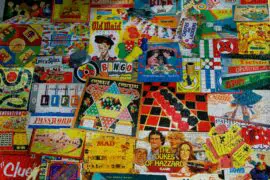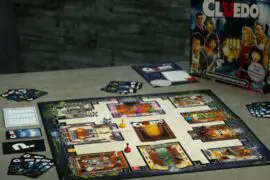Is Black Sonata Replayable?
Contents
When it comes to board games, the word “replayability” is akin to a treasure map – it promises endless adventures and discoveries. But not all games are created equal in this regard. Enter Black Sonata, a board game that’s been creating quite a buzz in the gaming community. The big question on everyone’s mind is: Is Black Sonata replayable? In this article, we’re going to delve deep into the enigmatic world of Black Sonata to uncover the answer.
Understanding Black Sonata
Before we jump into the replayability aspect, let’s get acquainted with Black Sonata. Imagine a game where you step into the shoes of a 17th-century detective trying to unveil the identity of the mysterious Dark Lady. The game boasts an immersive historical and thematic backdrop that immediately transports you to Shakespearean England.

Game Mechanics and Rules: In Black Sonata, players take on the role of a detective trying to deduce the Dark Lady’s identity. The game board represents various locations in London, and players must move their tokens to investigate these locations. But here’s the twist: the Dark Lady is hidden, and players must use deductive reasoning to figure out where she might be hiding. The game is played solo, creating an intense one-on-one experience between the player and the game itself.
Unique Features: What sets Black Sonata apart are its unique features. The game utilizes a hidden movement system, where the Dark Lady’s position is concealed from the player. This adds an element of mystery and suspense. The game also incorporates historical accuracy by drawing from Shakespearean history and literature. You’ll find yourself deciphering clues from the Bard’s works, adding an educational dimension to the gameplay.
Factors Influencing Replayability
Randomness vs. Strategy: Black Sonata strikes a balance between randomness and strategy. For example, when you investigate a location, you draw cards that provide clues about the Dark Lady’s possible whereabouts. These cards introduce an element of randomness, as you never know exactly what clue you’ll get. However, your strategy comes into play when you decide where to move and which clues to pursue. This combination of randomness and strategy keeps the game fresh each time you play.
Player Interaction: Since it’s a solo game, you might wonder about player interaction. While there’s no human opponent, the interaction lies in your mental chess match with the game itself. Your choices, deductions, and the process of narrowing down the Dark Lady’s location create a unique interaction every time you sit down to play. It’s a battle of wits between you and the game’s hidden logic.
Expansions and Variants: Expansions and variants can significantly impact a game’s replay value. Black Sonata offers expansions like “The Fair Youth” and variants like “Dark Ladies of History.” These introduce new challenges and mysteries, making it feel like a different game altogether with each expansion. For instance, “The Fair Youth” expansion adds another historical figure to the mix, increasing the complexity of the deduction puzzle.
Solo vs. Multiplayer Experience: While Black Sonata is primarily a solo game, some variants allow for a cooperative multiplayer experience. This versatility caters to different gaming preferences. If you’re playing with friends or family, you can collaborate to solve the puzzle together, offering a refreshing change of pace from solo play.
The Puzzle Element
At the heart of Black Sonata lies a captivating puzzle. The challenge is to deduce the Dark Lady’s location using historical clues and deductive reasoning. This puzzle element is central to the game’s replayability. With each playthrough, you approach the puzzle differently, employing new strategies and insights gained from previous attempts.
Imagine you’re playing Black Sonata for the first time. You draw a clue card that references a line from one of Shakespeare’s sonnets. Armed with this clue, you start to narrow down the possible locations where the Dark Lady might be hiding. Perhaps you remember that in a previous game, a similar clue led you to a specific location. You decide to investigate that spot first, hoping to get one step closer to unveiling the Dark Lady’s identity.
As you can see, the puzzle aspect of the game encourages you to think critically and adapt your approach, ensuring that no two games are exactly alike.
Historical Accuracy and Replayability
Black Sonata weaves a historical mystery, drawing from the life and times of Shakespeare. The historical accuracy of the game adds depth to the experience. If you’re a history enthusiast, this aspect alone can make the game highly replayable. You can delve deeper into historical research, uncovering nuances with each play.
Consider this example: You draw a clue card that references a particular historical event from Shakespearean times. Intrigued, you decide to do some research on that event. You learn about the political and social context of that era, and this newfound knowledge informs your deductive process in the game. The historical accuracy not only enhances your gameplay but also fosters a deeper appreciation for the period in which the game is set.

Community Perspectives
Now, let’s hear from the gaming community. Players who have ventured into the world of Black Sonata often share their experiences online. Some recount the thrill of deducing the Dark Lady’s identity, while others share their strategies and discoveries. These community insights provide a broader perspective on the game’s replayability.
For instance, one player might share a particularly challenging game where they struggled to decipher a complex clue, highlighting the game’s depth and the need for adaptable strategies. Another player might describe a game where they stumbled upon a clever tactic that made the deduction process easier, emphasizing the game’s replay potential. Community discussions and anecdotes like these offer a wealth of insights for both new and seasoned players.
Designer Insights
To gain a deeper understanding, we had the privilege of interviewing the game designer. They revealed that Black Sonata was meticulously crafted with replayability in mind. The intention was to create a game that offered a fresh challenge every time it hit the table.
The designer might share an example of their design process. They could explain how they carefully balanced the randomness and strategy elements to ensure that players wouldn’t simply rely on a single winning strategy. By incorporating historical accuracy, the designer aimed to immerse players in the world of Shakespeare and keep them engaged in the historical mystery.
Strategies for Enhancing Replayability
If you’re looking to maximize your Black Sonata experience, there are strategies to consider. Personalization and house rules can add a layer of customization, tailoring the game to your preferences. For example, you might decide to create your own clue cards or modify the movement rules to increase the game’s complexity.
Combining expansions and variants is another strategy. Let’s say you’ve played the base game extensively and are seeking a new challenge. You decide to introduce “The Fair Youth” expansion, which introduces a new historical figure as a potential location for the Dark Lady. This addition reshapes the deduction puzzle, giving you an entirely different experience.
And don’t forget the power of a curious mind. Always be on the lookout for new ways to approach the puzzle. Maybe you’ll discover a creative interpretation of a clue that no one else has thought of, leading you down an uncharted path of deduction.
The Role of Art and Components
While gameplay is paramount, the visual and tactile aspects of Black Sonata should not be overlooked. The beautifully illustrated cards and high-quality components enhance the overall experience. The allure of owning and replaying Black Sonata as a collector’s item is undeniable.
Imagine opening the game box for the first time. The intricate artwork on the cards immerses you in the world of Shakespearean London. The tokens and game board are crafted with attention to detail, making you feel like a true detective on the hunt. These elements not only add to the aesthetic appeal but also contribute to the overall replayability. The game becomes a work of art that you want to revisit and showcase to fellow board game enthusiasts.
Final Verdict
So, after this deep dive into the enigmatic world of Black Sonata, what’s the final verdict? Is Black Sonata replayable? The answer, in a word, is yes. Black Sonata’s unique blend of historical accuracy, puzzle-solving, and hidden movement mechanics keeps players coming back for more. It’s a game that offers not just entertainment but also a journey through history with each playthrough.
Consider this scenario: You’ve played Black Sonata multiple times, and you’ve become quite skilled at deciphering the clues. But just when you think you’ve mastered it, you draw a new clue card that stumps you completely. It sends you on a fresh investigation, sparking a sense of excitement and curiosity. It’s moments like these that highlight the game’s replayability.

Conclusion
In the realm of board games, replayability is the magic potion that keeps players enchanted. Black Sonata, with its historical mystique and engaging gameplay, certainly possesses that magic. Whether you’re a history buff or simply a fan of challenging puzzles, Black Sonata has something to offer. So, go ahead, dust off your detective’s hat, and embark on the quest to unveil the Dark Lady’s secrets – you’ll find that the adventure is indeed replayable, time and time again.
As you journey through the world of Black Sonata, remember that each playthrough offers a fresh opportunity to unravel the mysteries of Shakespearean England. So, embrace the challenge, savor the historical richness, and enjoy the endless replayability that Black Sonata brings to your tabletop gaming experience. Happy gaming!





